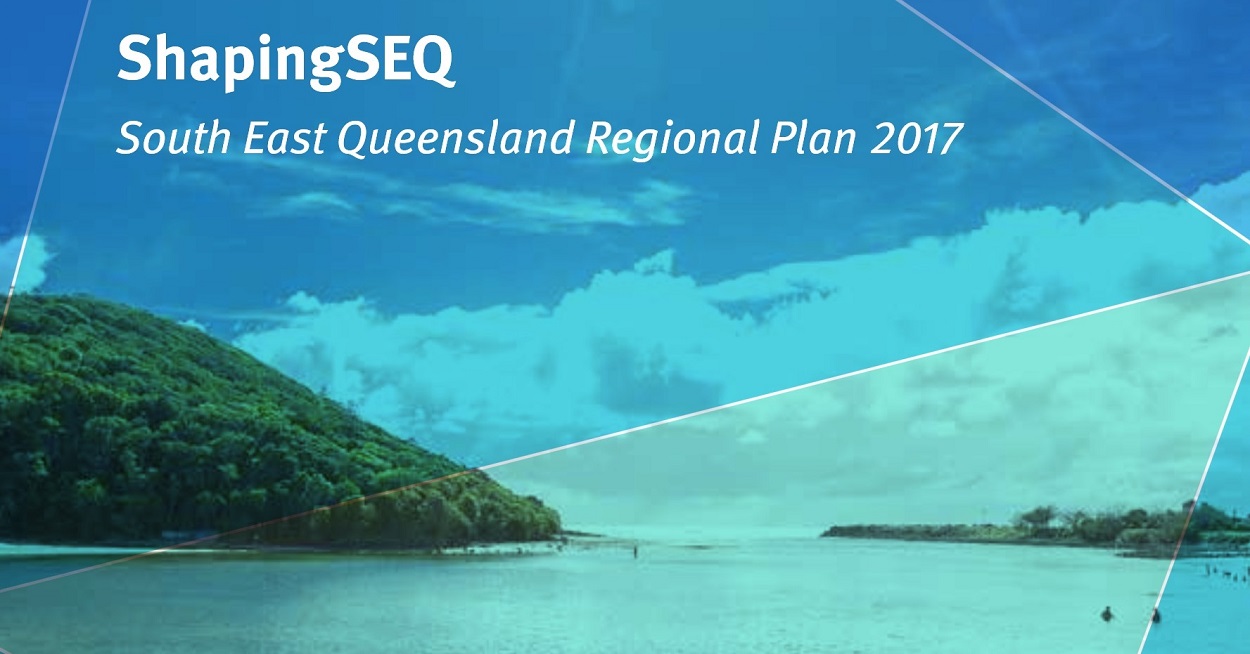
The ShapingSEQ regional plan was discussed at a recent Redlands2030 meeting
ShapingSEQ, the newly approved regional plan for south east Queensland, will cater for rapid population growth over the next 25 years and beyond.
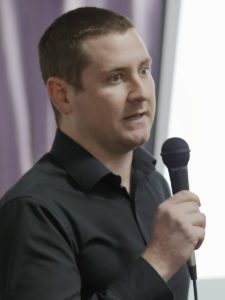
Sean Collingwood speaking about ShapingSEQ
The South East Queensland Regional Plan 2017, known as ShapingSEQ, was adopted by Minister for Planning Jackie Trad on 11 August 2017. The new Plan replaces the South East Queensland Regional Plan 2009–2031.
Department of Infrastructure, Local Government and Planning representatives Ms Anna McGrath and Mr Sean Collingwood discussed the new regional plan at a Redlands2030 meeting on 24 August.
Key points raised during the discussion included:
- A majority of public submissions about the draft regional plan came from Redlands
- Government forecasts had underestimated population growth over the past decade
- Population growth projections for Redland City don’t factor in the proposed Toondah Harbour project which sits outside the normal planning framework
Mick de Brenni the MP for Springwood (including Sheldon and Mt Cotton), who is Minister for Housing and Public Works and Minister for Sport, will be the guest speaker at Redlands2030’s next meeting on Thursday 28 September.
Majority of submissions came from the Redlands
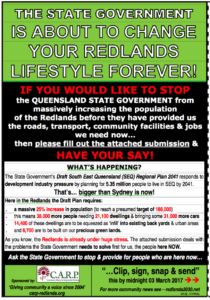
CARP submission about the draft Regional Plan
Redland City residents contributed more than 60% of the 3,300 submissions to the draft Regional Plan.
Only 873 submissions (26% of the total) came from other council areas in south east Queensland with the remainder coming from outside the region.
Clearly the community most concerned about the regional plan is Redlands.
The huge Redland City response to the draft Regional Plan was attributed to Community Alliance for Responsible Planning” (or C.A.R.P.) who provided residents with a template for making submissions arguing for reduced population growth.
CARP was clearly instrumental in driving, what Minister Trad referred to as a “phenomenal” community response to the Plan.
Population growth
The Minister, Jacki Trad and her planners set an ambitious task in the new Plan by intending to show how the Region will grow, prosper, connect, sustain and live over the next 25 years.
The new Plan is essentially a growth management plan which ignores calls by CARP and the community for population growth to be reduced or halted.
By 2042 the region’s population is expected to increase by 1.9 million to 5.3 million people.
Over the same period Redland City’s ppopulation is expected to grow by 36,000 people (26%) from 152,000 to 188,000.
This does not include a possible extra 8,000 to 10,000 people if the Walker Group’s proposed Toondah Harbour mega development were to happen.
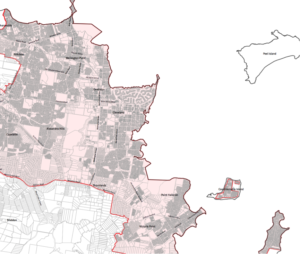
The Toondah Harbour PDA is not shown on the regulatory maps of the new SEQ Regional Plan. The PDA is exception to the rule …and the Plan is only a month old!
Development in the Toondah Harbour Priority Development Area (PDA) is controlled by the State Government under the Economic Development Act separate from the regional planning process. The Toondah PDA is NOT in the Urban Footprint of the new Regional Plan.
From 2011 to 2016 the actual population growth of the region exceeded projected population growth by about 15%. This forecasting error may explain why the community is consistently calling for better provision of infrastructure like roads.
A population of 7 million in south east Queensland by 2067 is projected in the Plan’s 50 year vision.
The Plan’s basic philosophy is that land will continue to be made available for development with community and environmental values a secondary consideration.
Employment
Employment planning baselines reflect Queensland Government projections of possible future employment growth. Regionally the projection is from 1,580,881 (in 2016) growing to 2,600,502 (in 2041) which is an expected growth of 64% to 2041.
These figures require growth in employment to be about 10% faster than the population growth. In discussion audience questions raised the lack of alignment in these figures. There was a suggestion that to achieve this outcome employment in SEQ will need to defy world wide trends impacted by robotics and technology.
Redlands employment is projected to grow from 44,781 to 69,193 which would be a mammoth achievement involving employment growth of 55% going forward while the population grows by 26%. Actual growth in recent years has been minimal.
Redlands outcomes from ShapingSEQ
Under the new Plan the identity of Redland City has been blurred and the City becomes part of the Metro sub-region together with Brisbane, Logan and Moreton Bay council areas. It seems likely that the Brisbane component will have planning priority and get most infrastructure funding.
The finalised regulatory map acknowledged community concerns about future use of the Commonwealth lands at Birkdale.
It was designated Urban Footprint in the Draft ShapingSEQ Plan in response to a request from Redland City Council.
After further assessment and submissions received from the Redlands community this area was designated Regional Landscape and Rural Production Area in the final plan.
Council and the community were clearly at odds on that issue, and its seems the Government in this instance took notice of what the community said..
The Southern Redland Bay area was designated Regional Landscape and Rural Production Area in both the draft and final plans. Community submissions failed to sway the Minister in this instance. But given the way the Shoreline development application previously unfolded inspire of the previous SEQ Regional Plan designation it was never likely Minister Trad would listen to the community submissions.
No net loss of koala habitat
Koala habitat (dependent on expert panel reporting but even establishes a goal of “no net loss of koala habitat” which takes has no regard to the abject failure of past and existing planning provisions aimed at koala protection; and establishing a Housing Supply Expert Panel to ensure that housing needs will keep pace with estimated growth, as part of a $5 million investment in land supply monitoring.
Other planning initiatives
A few other initiatives were mentioned including:
- Future urban density
- Infrastructure planning
- SEQ Regional Assessment (to accord with Federal environmental laws)
Q & A about the ShapingSEQ regional plan
The willingness of the DILGP officers to engage with the Redlands community about ShapingSEQ was appreciated. A collection of the questions from meeting attendees which could not be answered on the night are being presented to DILGP for written response.
Redlands2030 will undertake some analysis of ShapingSEQ and will take on board suggestions for another community discussion.
Mick de Brenni to speak at next Redlands2030 meeting
Mick de Brenni, Minister for Housing and Public Works and Minister for Sport, will be the guest speaker at the next Redlands2030 monthly meeting on Thursday 28 September.
Mr de Brenni is the state MP for Springwood which includes Redland City suburbs of Sheldon and Mt Cotton since an electoral redistribution earlier this year.
Monthly meetings of Redlands2030 featuring a diverse range of guest speakers and topics are open to the community, subject to an RSVP.
Redlands2030 – 11 September 2017
Please note: Offensive or off-topic comments will be deleted. If offended by any published comment please email thereporter@redlands2030.net
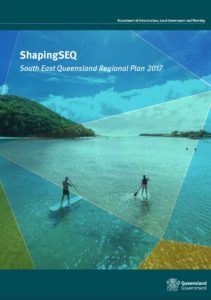
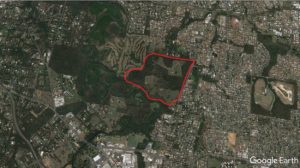
3 Comments
The problem for the new SEQ RP is that real issues are complex and things dont operate in boxes. With Jackie Trad out of her depth and the planning “industry” dominated by developer and property interest the plan is really about a development sausage machine….that will see a small sector make money and leave behind an environmental, social and economic desert.
Sadly there has been no critical analysis of their plan by independent authorities. One response was no one wants to criticise the hand that feeds them.
So communities are left to fend forthemseles and the authors of the plan are answerable to…themselves.
Planning 101 it aint…planning for 1960 it might be.
The new Plan seems to have gutted many of the initiatives of the previous iterations….maybe the task of doing it right was too hard. So in lieu we have “Trad offs”.
The government gazette of 11th August 2017 lists the Beerwah East Major Development Area previously gazetted in 2016 but now MDA 01 . The gazette also lists the SEQ Regional Plan also badged as Shaping SEQ . A Third gazettal indicates that the Minister will not make the South East Queensland Regional Plan State Planning Regulatory Provisions (SPRP) .
Funny business progressed under the last SPRP outside the Urban Footprint at Carbro0k for a Tourist Resort on the Logan River and a rural development on an Indigenous Site at Juniper Road . So the SPRP or its remains now may be in some regulation which can trigger a Preferred Future Growth Area(PFGA) or other site like a Major Development Area ?
The staff from DILGP above also listed the $5M Strategic Investigation Area under the EPBC Act (MNES). But matters of state environmental significance (MSES) and matters of local environmental significance (MLES)were also listed . Local Authorities are not being paid to re evaluate RBVs or MLESs and have shown little comprehension of this shedded responsibility from State Government.So the battle to map Eprapah Creek and Mt Cotton continues.
This DILGP listing however omits High Value Regrowth (6,900 ha of Redlands koala habitat), Regional Biodiversity Values (RBVs) in the SEQ Regional Plan , the cross hatched Regional Biodiversity Corridors (Mt Cotton)in the SEQ Regional Plan( old map4a) and Indigenous Sites still to be identified along the Redlands mainland shoreline . Other Biodiversity Hotspots in Redlands and Green Fauna Infrastructure as general classifications and elsewhere have not made it to the SEQ Regional Plan. Not the values with which one would trust the future SARA one stop approval shop to deal or override.
The term of reference for the SIA (now SEA) are not available yet. The groups of Redlands must advocate at several levels and stages for inclusion of these values , many uncollated or unmapped.
The claims supporting the South-East plan, and Redlands future in particular, have no relativity to international megatrends (e.g. Aging populations, technology, climate change), basic economic sustainability or mobility considerations. This undermines the entire integrity of the proposal.
1. Based on international sustainability indicies, a population of 1200 – 1500 households can be self-sustaining, with provision for old-age redundancy, and employment across 64 vocations – not just one. In relegating Redlands to be a Dormitory zone only, feeding jobs to CBD centres like Brisbane, this plan positions Redlands to be entirely reliant on external economies for jobs and provisioning, with no potential for industry investment if that strategy doesn’t work. In the event of a recession, natural disaster, fuel crisis, or supply shortage, Redlands would come to a screaming halt, entrenched as a welfare zone, experiencing real hardships, with no potential to service its own people in being denied local resources, and literally surrendering Queensland’s salad Bowl area to a sea of depreciating housing falling into disrepair. Road could resemble car-parks. Lot sizes are totally inadequate for a household to service its own consumption needs, and we have no community food production. It’s a grim reality. I don’t think many Australians realise how many service stations, aka our fuel lines, are now foreign owned, surrendered by Councils and State authorities. Do you know who owns your local fuel supply? Don’t look to Coles and Woolworths – they’re selling this asset out, and our governments are letting them go to foreign interests. How resilient is that, from a national security perspective? It’s worth asking, and a real reality check if you get an honest answer, which you probably won’t.
Consider this – In a natural disaster, after delegating fuel to emergency services, we would have a predicted 2 day fuel supply (Not 2 weeks), and no communications after 8 hours. How long do you think it would take before you and your family started hurting, and the local community started going to hell? How long would your food supply last? Would money be worth much?
2. The only Redland industry targeted for investment is the Health Precinct, in response to Aged care. What a short-sighted strategy this is, with Redland composed of predominantly aged residents and less than 14% youth. How strong will our local economy be after our baby-boomers expire, due to our inability to retain youth and families here? Why is there no investment or planning to increase and improve amenities as appropriate? What impact will this have on retirements funds and cost-of-living increases and inflation? The Queensland Treasury Office of Statistics recently predicted that Redland’s population would fall to half its 2011 population rate by 2031, when Baby Boomers pass away in accord with natural attrition rates. This will leave us with an excessive amount of aged care workers that are no longer required and have no other industry employment opportunity to go to.
3. Our Baby Boomers are retiring over the next 5 years. 50% of the area’s tax revenues will retire with them. According to CEDA Reports 10-15% of jobs will be lost to technology improvements within the next 10-15 years. With China and India closing their economies in 2020 and 2021, we lose another 20% of related local employment, due to lost Chinese opportunities alone. That means that the taxation revenues supporting our quality-of-life, in a few short years, will rely on 15% or less, of our current tax revenue base only, with no innovation or alternative industry investment at all, and none accommodated in the planning pipeline. Note that in 2015 China also declared investment in residential housing, cinemas, hotels and fuel stations as “frivolous investments”. In August 2017, China announced its reduction of Australian investment by 50%. I am not sure what our Mayor hoped to achieve for Redlands with her Chinese delegation, with our biggest employment area (residential construction) no longer eligible for investment, 50% of construction commitments being withdrawn, and no industry investment allocated to Redland to leverage legitimate Chinese investment here. China’s investment strategy ensures they will later be able to pick up Australian realty for a “song”, and enable extensive land-banking – which they can afford to sit on for decades, controlling supply, or doing nothing. Essential utilities are rendered vulnerable to asset sales, to finance increasingly unsustainable council revenues, with the potential to secure and ransom essential services (e.g. water, and energy), and supply chains. Case-in-point: There’s not many Australian owned and staffed Abattoirs anymore, and where is the best primary produce going?
(Watch property values and rental rates begin to fall, as construction company defaults begin to tally. Primary produce and utility prices have also begun to escalate alarmingly. Are we in danger of becoming enslaved)?
Our second biggest employment area: Social Services and welfare, is about to get bigger again in consequence.
Right now, Southern Moreton Bay Islands finance 20% of Redland council revenues despite having youth unemployment at 43%. Look to that economy, and the levies being paid, and its social and welfare issues, as an indicator of what life across Redland City could become – a community fraught with council re-possessions and defaults, and unfair levy arrangements without equivalent servicing and amenities. How does this reality compare with the unsubstantiated fantasies supporting this South-East Qld Plan?
How is Tourism alone, to support the Stradbroke Revitalisation Plan, with proposed PDA developments that undermine the natural attractions most valued as likely to attract tourists to the region, with hospitality investments also reduced?
4. The proposed plan does not address increased state roads, rail extensions, or increased public parking requirements to link with promised, but unsubstantiated, public transport provisions. (Witness the Weinam Creek debacle – Already inadequate for the SMBI population, but the source of considerable penalty revenues in loaded parking fines).
Authorities are still promising high-frequency bus lines, and justifying outrageous 8-figure bus and ferry terminal builds to service less than 20 bus routes per day. Shouldn’t that money be better prioritised in increasing services than in shelters offered at rates equating to prime CBD multiple storey sites with extensive commercial licensing? (The Qld Irish Club with multiple commercial licences, function centre facilities, and potential to build up to 10 stories with parking, behind the Brisbane Hilton, sold for less than the cost to build the terminals at both Weinham Creek, and Capalaba Park & Ride).
The reality is that these services, that would need to operate 24/7 to access jobs and local resourcing requirements, which don’t exist, are proposed to operate only from 7am – 7pm. The dedicated road lanes supporting them have been cancelled, meaning that increased bus servicing without dedicated transit lanes, will actually increase the gridlock by competing with normal road traffic expected to increase with an additional 50,000+ vehicles and PDA & new construction delays. Add another $2 million just to do the engineering studies to assess traffic hazards as a result of development permitted adjacent to Cleveland Station.
Most new construction work is being offered to workers who live outside the area. Why?
Latch-key kids are already waving their Parents goodbye to enable them to get to work at 5:30am, and don’t see them again until after 7pm due to traffic.
Consider also, that our local radio station, the source of huge controversy regarding alleged political interference and conflicts-of-interest at BayFM’s last election, is now also breaching its broadcast limits, that allegedly contribute to road hazards again. Despite attracting ACMA complaints from Police and emergency authorities and international broadcasters who allege their signals are being interfered with, nothing is apparently being done. The emitting Broadcasting towers are now all centralised at the end of Mount View Road, Mount Cotton, with a reach extending across all of South-East Queensland, from the Glass House Mountains to Mount Warning. Broadcast frequency interference was targeted by local authority emergency services for contributing to a life-threatening gridlock on the M1 a few weeks ago, that took 5 hours to clear, when a truck inexplicably burst into flame (Trucks are monitored 24/7. No irregularities go undetected, so this incident was truly bizarre). A test run, or a precursor of what to expect in the future?
There is a lot of basic housekeeping yet to be done. But in kitchen vernacular, this recipe won’t pass the pub-test, or the test kitchen. Its missing some essential elements, and is unlikely to produce anything worth tabling, until it is revised thoroughly, and audience tested for stakeholder acceptance. I’d go even further to suggest that it is hazardous to health, in terms of sustainability, liberty, basic economics, environment, community resilience, safety, security and values, industry, employment, obesity and life-style disease, and over-all quality-of-life. Where is the balance?